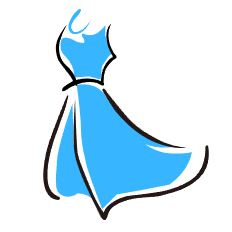Once upon a time, shopping for makeup meant choosing between pigment and payoff, wear time and value. Now, there’s a new factor at the forefront of consumer minds: what’s in the product, not just how it looks on the skin. As awareness around health, sustainability, and ethical sourcing continues to grow, so does demand for clean makeup—cosmetics that are as safe and transparent as they are effective.
But “clean” isn’t just a buzzword—it’s a movement that is rapidly reshaping the beauty industry. In response, a new wave of clean makeup brands is rising, offering formulas that are high-performance, skin-friendly, and free from potentially harmful ingredients. These brands go beyond mere marketing—they’re redefining what beauty means, from ingredients to impact.
In this essay, we explore the driving forces behind clean beauty, what defines the category, and the brands leading the charge toward a more conscious kind of cosmetics.
What Does “Clean” Makeup Really Mean?
Unlike terms such as “organic” or “hypoallergenic,” there’s no universally agreed-upon definition for “clean” in the beauty industry. However, it’s generally understood to mean makeup products formulated without a specific list of controversial ingredients—like parabens, phthalates, sulfates, synthetic fragrances, and certain silicones—while maintaining safety, efficacy, and often a commitment to sustainability.
Clean makeup aims to bridge the gap between “natural” and “effective.” It’s not necessarily 100% natural or organic, but it is developed with ingredient transparency and skin health in mind. Importantly, clean beauty also tends to be cruelty-free, and many brands take additional steps to align with environmental and social responsibility.
In short, clean beauty is not just about what’s removed—it’s about what’s added: integrity, consciousness, and care.
Why Clean Makeup Is More Than a Trend
The clean makeup movement is a response to multiple converging concerns:
Health Consciousness: As people become more aware of what they eat and breathe, it’s only natural they begin to question what they’re applying to their skin—especially since skin is the body’s largest organ.
Environmental Awareness: Clean brands often consider packaging waste, carbon footprint, and biodegradable ingredients, addressing the beauty industry’s long-standing environmental issues.
Transparency and Trust: Consumers are tired of cryptic ingredient lists and opaque supply chains. Clean brands offer clearer labeling and open dialogue, which builds brand loyalty.
Diversity and Inclusivity: Many clean brands are founded by women and people of color, addressing gaps in representation and offering broader shade ranges and inclusive marketing.
These concerns reflect a generational shift toward more intentional, values-based consumption—and makeup is no exception.
Rising Stars: Clean Makeup Brands Worth Watching
Let’s take a look at the brands setting a new standard in clean makeup. These companies are not only innovating in formulation and packaging, but also leading important conversations about beauty, health, and sustainability.
- Saie
Launched with a mission to make clean makeup sexy and wearable, Saie blends minimalism with modernity. Their Dew Blush has become a cult favorite, praised for its blendable texture and naturally radiant finish. Saie emphasizes eco-friendly packaging, climate neutrality, and responsible ingredient sourcing—without sacrificing the fun of playing with color. - Kosas
Kosas is redefining what makeup can do by combining color with skincare benefits. Their products, like the Revealer Concealer or 10-Second Eye Gel Watercolor Eyeshadow, are infused with active botanicals, hyaluronic acid, and caffeine. Kosas is especially loved by those with sensitive skin, offering formulas that support barrier health and minimize irritation. - Tower 28
This brand takes transparency seriously, especially for those with reactive or acne-prone skin. Every Tower 28 product is certified by the National Eczema Association, making it a go-to for clean beauty lovers who need gentle formulas. Their ShineOn Lip Jelly and BeachPlease Tinted Balm show that clean can be colorful, buildable, and fun. - Rituel de Fille
For those who want clean makeup with an edge, Rituel de Fille offers bold pigments and otherworldly textures. Inspired by alchemy and nature, their products—like the Ash and Ember Eye Soot—merge ritual with beauty. While they favor natural ingredients, their formulas are also long-wearing and high-performance, challenging the notion that clean makeup must be sheer or subtle. - Ami Colé
A standout in the clean beauty space, Ami Colé was created for melanin-rich skin tones, a demographic often underserved in both clean and conventional makeup lines. Their hero product, the Skin-Enhancing Tint, has earned rave reviews for its breathable, natural finish. The brand is also vocal about sustainability and cultural representation.
Ingredients to Know—and Avoid
A major part of the clean makeup conversation revolves around ingredients. While each brand maintains its own “no list,” there are a few commonly excluded ingredients across the board:
Parabens: Used as preservatives, parabens have been linked to potential hormone disruption.
Phthalates: Often hidden in fragrances, these have been associated with reproductive toxicity.
Synthetic Fragrance: A major irritant, especially for sensitive skin; clean brands often use essential oils or opt for fragrance-free formulations.
Talc: Concerns over contamination with asbestos have led many brands to replace talc with safer alternatives like mica or cornstarch.
BHA and BHT: Synthetic antioxidants used as preservatives, both of which raise potential health concerns.
Clean makeup brands often turn to natural alternatives—jojoba oil, shea butter, coconut derivatives, and ethically sourced pigments—to achieve the same textures and performance without compromise.
Clean Beauty Meets Innovation
One myth about clean makeup is that it lags behind conventional cosmetics in innovation. But today’s clean brands are challenging that assumption with cutting-edge formulations, technology, and design.
Consider how Kosas developed a clean mascara that actually improves lash health or how Saie incorporated airless pumps to preserve formula integrity without harsh preservatives. Some brands are even using biotechnology to develop plant-based pigments and cruelty-free alternatives to carmine (a red pigment derived from insects).
The clean beauty space is no longer playing catch-up—it’s setting the pace.
The Future of Clean: What to Watch For
As clean beauty continues to mature, here are a few emerging trends and areas to keep an eye on:
Refillable and Zero-Waste Packaging: Brands are designing packaging with the full product life cycle in mind. Expect more compostable materials, refillable components, and plastic-free options.
Lab-Grown Ingredients: To reduce environmental strain, some clean brands are turning to lab-grown ingredients—like synthetic squalane or lab-crafted mica—as ethical, sustainable alternatives.
Microbiome-Friendly Makeup: Just as skincare is shifting toward barrier protection, makeup is beginning to do the same, with formulations that support the skin’s natural flora.
Transparency Platforms: We may soon see standardized clean certification systems or third-party audits becoming the norm, giving consumers more clarity and confidence in their purchases.
Clean Beauty for All: Accessibility and Inclusivity
While clean beauty has made great strides, there’s still work to do—particularly around accessibility. Many clean brands come with higher price tags, often due to small-batch production or premium ingredients. As the market matures, there’s increasing demand for affordable clean options that don’t cut corners.
Inclusivity is another ongoing challenge. Brands like Ami Colé and Range Beauty are pioneering clean products for deeper skin tones, but many lines still skew light in their shade ranges. As the conversation evolves, successful clean beauty brands will be those that embrace a wider spectrum of users in both product offerings and messaging.















Discussion about this post